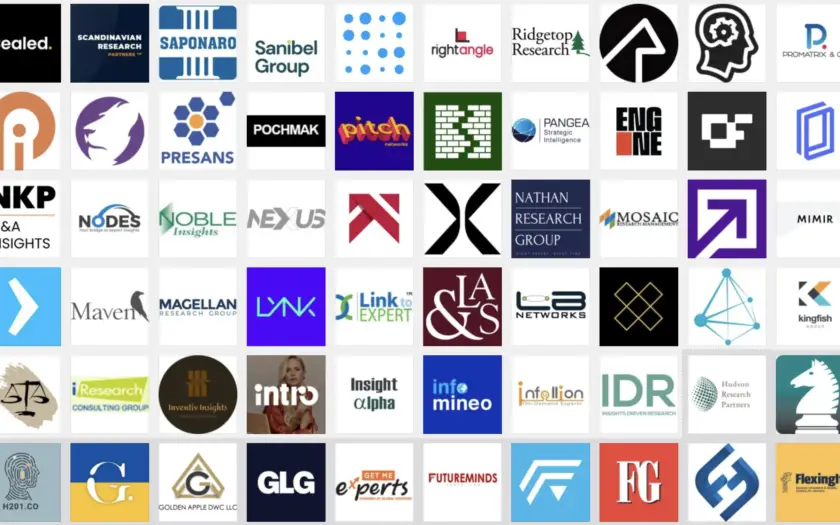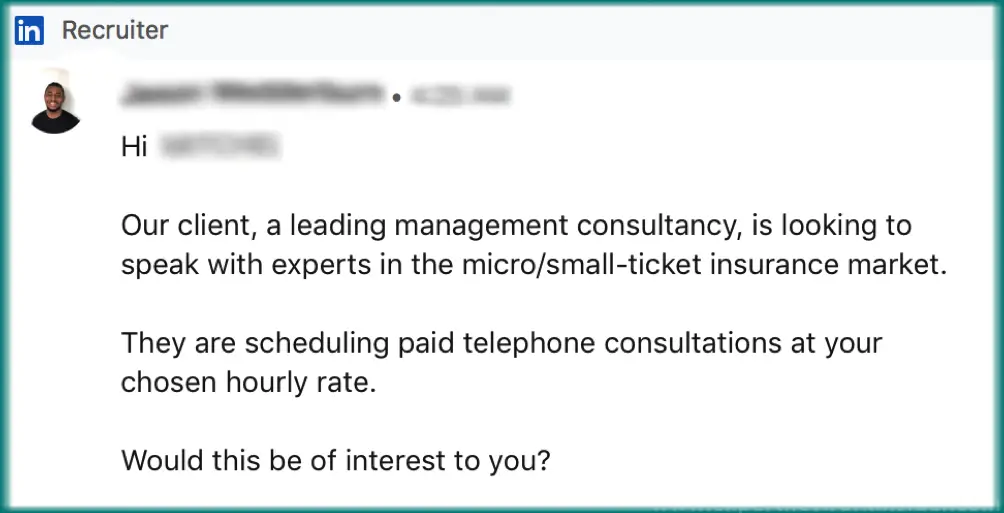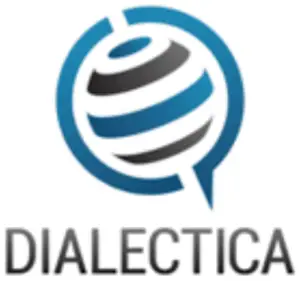The Ultimate Guide to Expert Network Consulting
Expert networks, like GLG, AlphaSights, Coleman, and Guidepoint, facilitate more than ONE MILLION one-hour phone calls per year with professionals from virtually all fields. These calls are easy, convenient and engaging micro-consulting projects that pay sky-high rates. Plus, they offer heaps of additional high-paying opportunities, including paid surveys, panel discussions and recorded interviews.
Whether you’ve just received a LinkedIn message or email from an expert network inviting you to participate in a paid consulting opportunity (and are wondering if it’s legit) or have completed your first few calls and want to figure out how to do more of them, here’s your guide to getting started and thriving in this secretive industry.
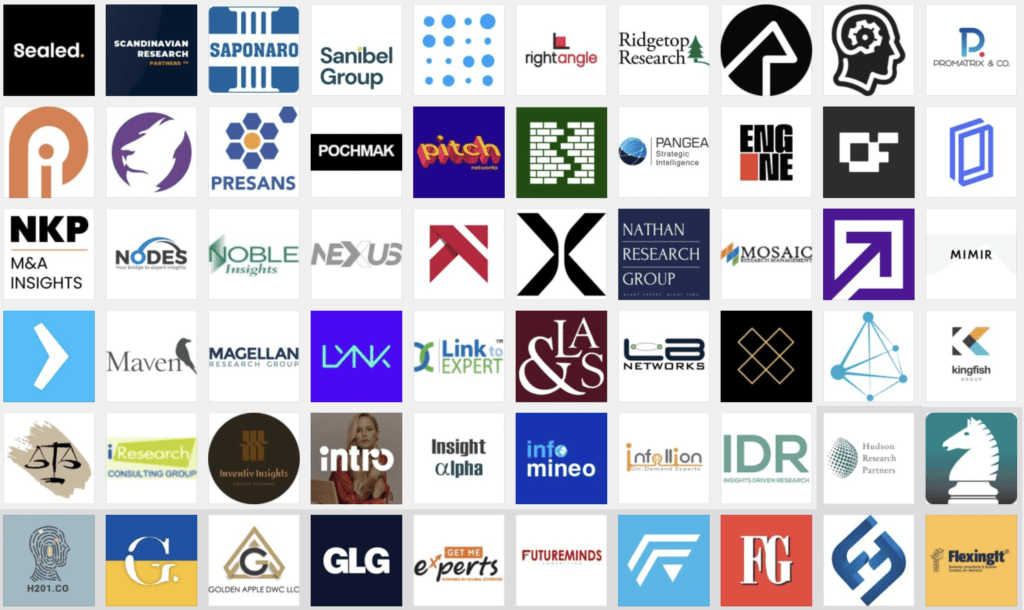
Imagine you’re an associate at an investment fund…
You’ve just come out of a meeting to learn more about a business your firm is considering investing in.
The CEO was intelligent, charismatic, and told a great story about his company, including some glowing quotes from satisfied customers. He excitedly detailed how a new product line is going to revolutionize the industry. And he showed financial projections that point sharply up-and-to-the-right (even though they were labeled as conservative)!
Everyone was impressed, including your boss who wants to explore buying tens of millions of dollars worth of stock. But the timeline for a decision is tight, so he wants you to dive into deeper research on this business right away.
Ultimately, there’s one key question he needs you to answer:
“Is it all bullshit?”
To get the real scoop, you’ll need to talk to people who actually know – like customers, suppliers, competitors, and especially former employees. While you’re just parachuting in to learn about the company, these people deal with it every day (and have for years). They know what’s going well with the business and what isn’t. They know what the real story is underneath the highly polished investor presentations.
And they’ll tell you everything you need to know…for a price.
Expert Networks: A $1.9 Billion Dollar Marketplace for Small Nuggets of Expertise

What is an expert network?
For hedge fund managers, venture capitalists, private equity investors, and management consultants, knowledge and information create invaluable advantages.
These advantages can mean the difference between making, or losing, millions of dollars.
Over the past twenty years, over 140 expert network companies have emerged worldwide to connect firms with information – more specifically, the experts who hold that information. These global expert network companies have rapidly grown into a $1.9 billion dollar industry that is attracting soaring venture capital investment, led by “The Big Five”.
The main product of expert networks is providing access to people like you, while charging their clients rates that often start at $1,000 per hour.
Best of all, once you connect with a few expert networks, these opportunities start coming to you. You don’t need to do any marketing or selling, and you’ll get paid within days. It typically takes just five or ten minutes to qualify for an assignment, and once you’ve gotten your feet wet with a few projects you’ll discover it’s so easy to find your rhythm that you won’t need to spend a single minute getting prepared.
Oh, and as soon as you hang up the phone, your work is done – no follow up, no deliverables.
Perhaps the most surprising thing about the expert network industry is it’s inclusivity. Expert networks are open to professionals from virtually any industry and at almost any level. As a result, there are more than 1 million expert network calls arranged each year. If you have deep knowledge on a company, product or market, odds are that someone is looking to tap into your expertise. This is especially the case if you have good ties to a ‘hot’ company or two, such as businesses that:
- are going public or about to be acquired
- have a soaring (or plunging) stock price
- have a new CEO or high management turnover
- are launching a trendy new product
- will be subjected to new government regulations or policies
Once you get to know the ropes it’s possible to earn several thousand dollars per year from expert network consulting, while working a small handful of hours!
Sounds like a dream side hustle, right? It absolutely is.
And I’ll show you how to tap into this world yourself. In this expert network guide I’ll explain the three types of phone calls you’ll typically have with a client, teach you how to get started with expert networks, show you how to stand out from the crowd, set your own hourly expert network rates, and nail your call. So let’s start by talking about what to expect.
>>> Click here to register as a GLG Council Member and start receiving project opportunities.
How to Drop One-Hour Knowledge Bombs
The most common way you’ll share your expertise is through one hour phone calls with a client.
These phone calls generally break down into three types of conversations:
#1 -The Company Deep-Dive
This is your bread and butter expert network call. Investors are looking at taking a position in a company and they want to start getting input from the feet on the street: former employees, competitors, customers, suppliers; or key influencers, like doctors or former government officials.
Most deep-dive calls are about public companies (or companies about to go public), and the client may or may not have spoken directly with management before chatting with you. Keep in mind they are not always looking at investing in the company you’re talking about – sometimes they are considering betting against it with a short position or investing in a competitor, though they’ll tend to keep those cards close to their vest.
On a good call, expect things to get laser focused after building rapport with a few softballs. Remember, this isn’t an interview or a sales call. They want to pick up the key insights they can’t get from reading reports or watching presentations, and they want to know what YOU really think.
- How do unit economics work and do you think they are getting better or worse?
- Do customers really like the product or are complaints pouring in?
- What do you think about the management team?
- Which competitors are really winning and losing?
These clients love numbers and will probe for any key metrics you can share (without revealing confidential or inside information). It’s worth pointing out that investors will rarely, if ever, ask for your thoughts on the share price. It’s their job to evaluate that.
#2 – The Industry Overview
Investors may kick off their research by speaking with a few experts. They often come into these paid consulting calls without much foundation, which can make these calls a cakewalk; you get to play the role of star professor while they lap up your every word.
These calls tend to dive down into who the major customers and suppliers are in your market segment, what the economics look like, and where the industry is headed. Things will generally shift to your opinion on the leaders or breakout companies, and if there’s an upstart product or technology, they’ll want your perspective on how that may impact the industry.
You may be asked for your quick take on several companies during a lightning round. But more frequently they’ll want to know, “what questions should we be asking?” as they will be talking to others.
#3 – Consulting to Consultants
While investment firms are the largest client category for expert networks, management consultants are increasingly using expert calls to sharpen their insights. Consulting firms are typically helping their clients launch a new product or business-line, improve the performance of one that is misfiring, or perform due diligence as part of an investment or acquisition.
These calls tend to revolve more around how things work, such as your process for evaluating a product or service that your company has recently purchased, or if a new product with certain features would be something you’d consider using.
Again, these calls are easy because clients will hang on your every word while happily paying you top dollar for your opinions (which they probably bill at 2X to their clients. ????)
Expert Network Surveys

Many expert networks also regularly conduct surveys on behalf of their clients. These tend to revolve around your perception of a set of products or what your expectations are for a market in the near future, such as if you expect your budget to grow, shrink or stay about the same and how you’ll allocate it over the next year.
These invitation-only surveys generally take 10 – 20 minutes to complete online and pay a fixed rate, that usually falls between $40 – $80. While they’re generally not as lucrative as completing calls, they are an easy way to make a few extra bucks in your spare time.
How to Get Started with Expert Networks
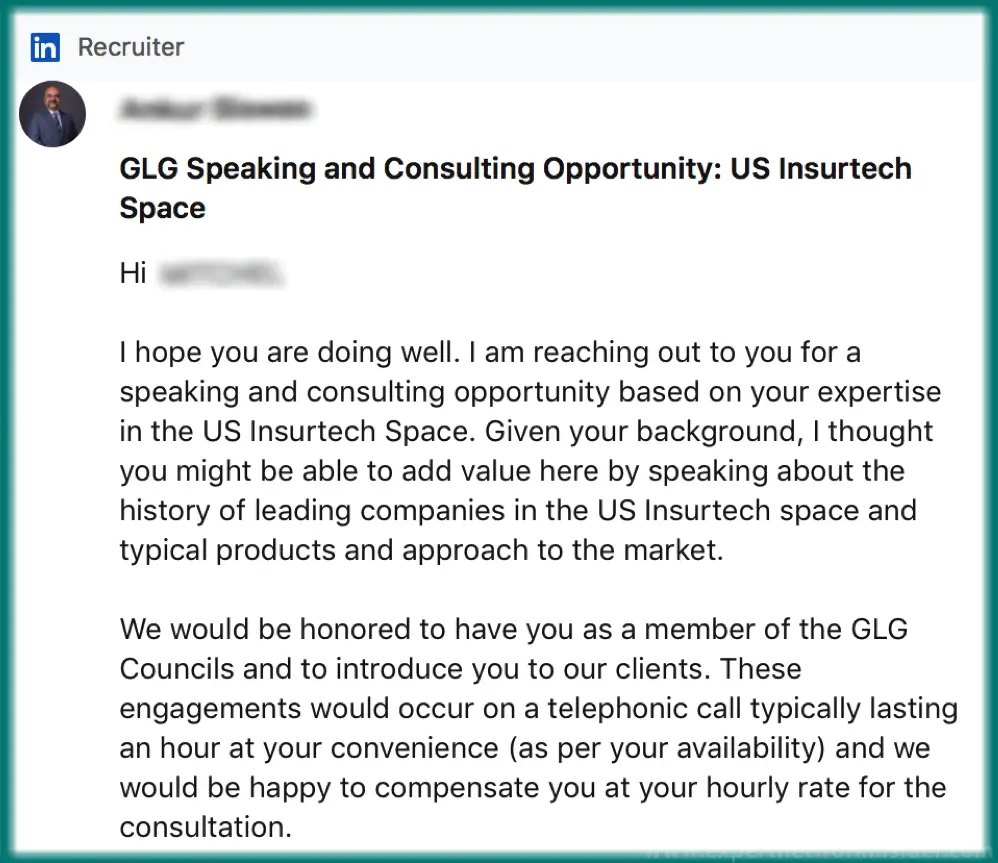
One of the best parts of expert network consulting is there are opportunities for practically any professional.
C-level executives charging over $1,000 per consulting call tend to get the headlines, but bread-and-butter projects go to upper and mid-level managers (you know, the people who actually DO stuff) in virtually any field:
- sales
- marketing
- finance
- manufacturing
- operations
- human resources
- strategy
- and more
And that’s not mentioning the countless projects in areas beyond business. Engineers, construction managers, small business owners, farmers, and former government officials are often in demand. Healthcare also comprises a meaningful chunk of the expert network industry, with a high volume of projects available to doctors, nurses, pharmacists, back office administrators, and veterinarians.
Ready to get started with expert networks? Here are your first steps mapped out.
Step #1 – Get found
Expert networks employ small armies of recent college graduates tasked with finding people who have the firsthand knowledge their clients are looking for on a project (AlphaSights ranks as one of the top 25 employers of new college grads!).
These associates spend much of their day trolling LinkedIn and looking for profiles that match up well with their project descriptions. They typically don’t know much about the subject of the project itself; they’re just trying to find people who match the requirements. (You may have found this page by doing some Googling about a paid consulting opportunity you received via a LinkedIn message!) Make it easy for them to connect with you on LinkinedIn by opening up the messaging settings on your and/or including your email address in the Contact Info section of your profile.
>>> Click here to register as a GLG Council Member and start receiving project opportunities.
Step #2 – Optimize your LinkedIn profile
Start by adding a descriptive and keyword-rich list of companies, products and industries to your profile (these should be subjects you can knowledgeably talk about). This will help your profile pop to the top of more keyword-driven searches. A good rule of thumb is if you could give a half hour presentation on a topic, you may be an expert in it.
Be sure to list out former employers, vendors you closely work with, software and products you use regularly in your job, and close competitors you frequently butt heads with. Be specific about what your role entails, especially if you share the same title with dozens or hundreds of other people at the same organization (such as ‘program manager’ or ‘vice president’). If you own a budget or are the final decision maker on large purchase decisions, call that out directly as well.
Associates may scan through hundreds of profiles a day, so make it easy for them to see that you closely match the requirements in their project spec.
Looking to fast-track your visibility? Read our insider tips on how to spruce up your LinkedIn profile for expert networks
Step #3 – Register with expert network companies
Once your LinkedIn profile is shipshape, the next step is to invest a few hours creating profiles directly with expert networks.
There are several hundred expert networks around the world, many of which are strong in certain geographies or industries and could be a great source of projects for you. However, “The Big Five” firms are a good place to start:
(If you are especially interested in completing expert network surveys that generally pay $40 – $70, you should also register with up-and-coming networks like Atheneum, Dialectica, Maven Research, proSapient, techspert.io, and NewtonX.)
Your expert network profile should look different than your resume or what you post on LinkedIn. Expert networks are interested in what you know, not what you can do, so omit the soft skills you typically list elsewhere. Your goals here are to show up near the top of the list in relevant search results and quickly convince an associate you match up well enough to their spec to earn an invitation to apply to their project. Associates will typically spend about 10 seconds scanning your profile, so make it SIMPLE AND EASY for them to find what they are looking for.
Remember, most of the time associates know little (or nothing) about the subject matter of the project itself – they only know the qualifications the client is looking for. Those are the terms they are putting in the search query field, and those are the words or names they look for when they scan your profile.
It may only take a few keywords to land a project invite, so list out everything you are qualified to speak about in clear and organized lists. For example, let’s say you’re a seasoned veteran in the sugary cereal business.
You would create detailed, cut-through keyword lists like this:
- I am an expert on cereal marketing, cereal product development, cereal pricing and promotion, food packaging design, and character licensing.
- I have five years of experience as a brand manager for General Mills monster cereals: Count Chocula, Boo Berry and Franken Berry.
- I compete directly with Kellogg’s Fruit Loops, Apple Jacks, and Coco Pops.
- I manage the $X million Got Milk cross-promotion and am a customer of Advertising Agency X, Marketing Agency Y, and Fulfillment Company Z.
Also, use an extremely direct headline or summary sentence to describe yourself. While you may have great success on LinkedIn by branding yourself with something clever like “Helping America love breakfast”, you don’t want to beat around the bush in your expert network profiles and should make a beeline for a clearer description like “Breakfast Cereal Brand Manager at General Mills”.
Looking to create an eye-catching expert network profile? Read our insider tips on crafting an unmissable expert network profile.
How to Get Picked for Expert Network Projects
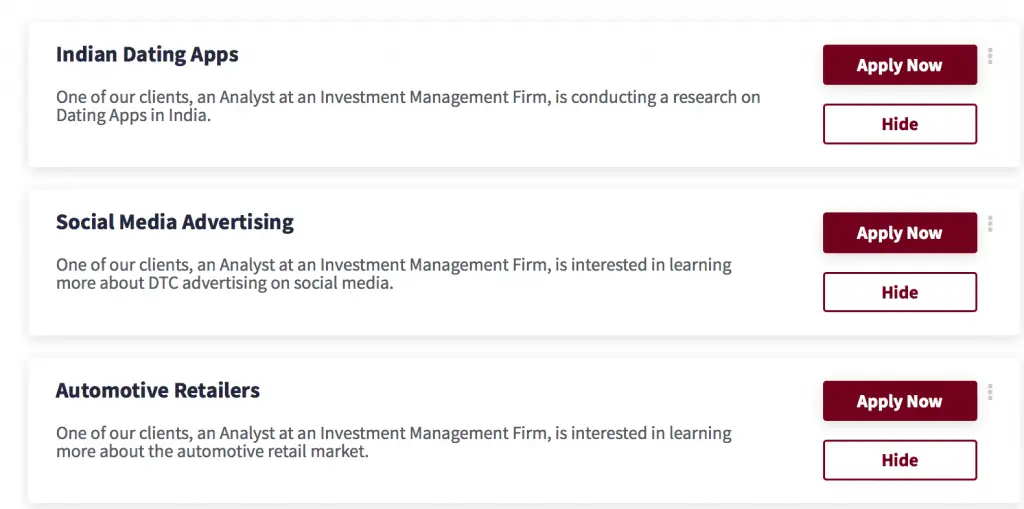
Alright, thanks to your finely polished LinkedIn and expert network profiles, you will soon start receiving invitations to apply for projects.
Most of these invitations should be on-point, but if you consistently receive emails about projects that are way off the mark, take another look at your profiles to see if you need to do any clarification or trimming.
Once you have become established with an expert network, you may be directly asked to participate on calls and projects. But for most opportunities, you will need to complete a few screening questions through an online form or brief phone call with an associate, especially if you are just getting started.
You’ll generally land about 1 out of 5 projects that you respond to, but with a few simple strategies, it’s easy to double that conversion rate. Three strategies I recommend include:
- Fast responses
- Create a template
- Set your availability
How to use speed to get picked for more expert network calls
Speed counts, so reply to project invitations as quickly as you can.
Associates will fire off invites to as many relevant experts as they can to participate in a project, so getting your response in fast helps put you at the top of the pile. This will prevent you from missing out when everyone sourced has a similar set of expertise as you. Most projects call for multiple experts, oftentimes with different relationships and perspective on the focus of the call.
Associates tend to favor highly responsive candidates too, because they view them as reliable and lower risk of causing a major headache like rescheduling a call at the last minute or failing to show up altogether.
How to use a template to get picked for more expert network calls
When answering the screening questions, think about what the associate (and client) is really looking for and deliver it to them. The ideal answer to each question is usually two or three sentences that clearly demonstrate you can deliver the goods. This templated three sentence structure is effective at conveying that you’re the expert they’re looking for.
Here’s an example of how your three sentence structure might look:
- Describe why you are an authority on this topic
Example: “I am a brand manager for Monster Cereals at General Mills and have ten years of experience in cereal marketing.”
2. Show that you are a leader and/or control budget in the area they want to know about
Example: “I am the final decision maker on toy-in-the-box promotions and oversee a $10 million annual budget for promotional inserts.“
3. Name related products or companies that they are likely care about and explain how you are knowledgeable about them
Example: “In the past year, I have executed significant purchase orders with Company A, Company B and Company C. I also explored proposals but did not buy from Company D and Company E.“
Consider how a direct, detailed, and concise answer compares to the respondents who write just a few words, or a simple ‘yes’. It’s hard to imagine a response like the example above wouldn’t make it to the top of the pile for a project on cereal box prizes!
How to use your availability to get picked for more expert network calls
Along with your responses to the screening questions, you’ll also have the option of listing when you’re available for a call.
Take a advantage of this, as it continues to make it easy for the associate to schedule a call with you. List as many convenient windows of time as you can, and don’t hesitate to include time when you take lunch or can pop out of the office or into a conference room for an hour or so.
Making money on your lunch break really is that simple!
>>> Click here to register as a GLG Council Member and start receiving project opportunities.
How to Set Your Expert Network Hourly Rate

Sky-high rates attract many people to expert network consulting.
But consulting rates vary considerably, generally starting at $100 per hour, but can soar as high as $5,000 per hour (GLG is rumored to have several high profile council members at this price point).
This makes the question of where to set your fee a difficult one to answer. To help you set your expert network hourly rate, here are my top tips…
Tip #1 – Focus on the value you are providing
Your expert network hourly consulting rate needs to make it worth your while, which generally means meaningfully more than your standard hourly compensation. Don’t be afraid to ask for a multiple of what you regularly earn. Remember to focus on the value you are providing (for example, how much a portfolio manager contemplating a multi-million dollar investment will learn from you in one hour) and remember that many expert networks will charge their clients over $1,000 to facilitate a phone consultation.
Tip #2 – Align your fee with the market
Now you’re ready to ask for the big bucks, but keep in mind you do need to align your fee with the market. Understanding the average hourly rates for people with similar experience and expertise as you can help you survey the landscape.
Some general guidelines to targeting your rate:
| Experience Level | Sample Job Titles | Hourly Rates |
|---|---|---|
| Individual Contributors | Manager, Nurse, Shift Leader, Small Business Owner | $100 – $250 |
| Upper Management | Vice President, Doctor, Engineer, Department Head | $300 – $500 |
| Prominent Executives | CEOs, Former Government Officials, Specialized Surgeons | $800 – $1,000+ |
While expert network associates have wide latitude on the rates they approve for a project, your hourly rate is a key factor in whether or not you are selected for a project (or even presented to the client).
Associates are closely evaluated on the profitability of their projects, so the more they pay out to experts the lower their profit margin. While associates strive to source experts with strong insights for their clients’ needs, if they find two people who look similar on paper, nudging the client towards the expert with the lower hourly rate can make the project more profitable for them.
Tip #3 – Establish yourself as an authority
The best way to consistently get assigned to projects while charging the upper-end of the rate band is by establishing yourself as a top authority in your field of expertise.
If you’re trying to land your first few projects with an expert network, put your consulting rate towards the lower end of your acceptable range to help land your first couple of projects. With a good performance on those initial calls under your belt, it’s easy to explain that you wanted to establish yourself and need to charge your higher ‘standard’ rate going forward. If you’re polite and professional, it’s not hard to rapidly increase your rate by 25% – 50%.
Being able to benchmark with what you charge at other expert networks is helpful too. A few up-and-coming expert networks focused on transparency, like DeepBench, will allow you to search and view other consultants profiles and rates. Put yourself into the shoes of an expert network consultant and search for the keywords terms that are commonly used on the projects that you land to see who else ranks highly in the search results. It’s a great way to research your competition for projects to see how they are positioning themselves and how your rates compare to theirs.
Tip #4 – Monitor your acceptance rate
Your acceptance rate on projects is another gauge for whether your rate is appropriate.
If you’re landing 1 – 2 projects out of every five projects you respond to, your rate is set at a good level. If you’re converting opportunities more often than that, a rate increase is certainly in order, while a a lower close rate may indicate you’re charging too much.
Reach out to associates to get feedback on why you weren’t selected for a project. They usually answer the phone and will give you straight feedback on how you can improve your chances of landing more assignments. A quick conversation can help you sort out whether you should adjust your rate, refine your profile, or be a bit more selective in which projects you apply for.
Tip #5 – Vary your rate by network and project
Every call is unique, so it makes sense to vary your rate by expert network and even by project.
For example, GLG has a reputation for pressuring consultants to keep their rates on the lower end, so your GLG hourly rate may wind up being lower than what you charge elsewhere in order to stay competitive.
You may also want to vary your rate by project, charging towards the lower end for broader projects where there are clearly many well-qualified experts available. Then opt for significantly higher rates for a client looking to speak to the few former employees from your business or functional area at your previous employer. Some expert networks make it easy to change your rate through their online interface, while you’ll need to ask an associate to do it for you on others.
Ready to increase your worth? Discover our insider tips on setting your expert network hourly rate.
How to Ace Your Expert Network Calls
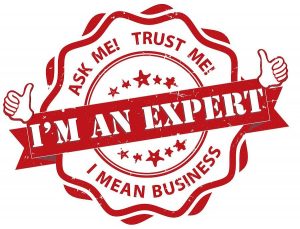
Alright, it’s finally showtime!
Time to dazzle the client with your deep knowledge and thoughtful insights. A stellar call is not only interesting and engaging, superlative feedback from the client can help establish your reputation with an expert network, making you their go-to expert for projects in your niche.
Outside of being the expert that clients expect of you, one of the most important rules of expert network consulting is also one of the simplest – SHOW UP ON TIME!
Being late for calls, rescheduling at the last minute’ or worst of all, failing to show up, will quickly get you blacklisted. To avoid this problem, find a quiet place with a good cellular or WiFi connection and dial-in a couple of minutes before your call is scheduled to start.
Note that many expert networks, like GLG and Guidepoint will pay you by the minute on a pro-rated basis, so try not to have a hard stopping time so you have some flexibility to go past the one hour mark. It’s always nice to pocket an extra $50 (or much more) by keeping a good conversation going for a few extra minutes! You can often seize an opportunity about 10 mins before the scheduled end of a call and say, “based on what you’ve told me, you might also want to ask me about X, Y, and Z. Tell me what you need to hear about.” It’s a great way to productively extend the call or lead to a followup.
As for the conversation itself, remember your main objective is to give the client the information and insights they are looking for. They want the real story, not what they can find in an investor presentation or a Google search. Be specific, name names, and provide numbers where you can. Most importantly, share your opinions. They are talking to you because you are in the thick of things, so don’t hold back on what you think is going to be a huge success, or why something is doomed to fail.
Here are a few more proven ways to stand out and guarantee you grow your reputation (as well as your earning potential):
- Don’t be afraid to go off-script: While clients will always come prepared with some questions, these calls tend to be fairly free-form. They like to hear about issues they haven’t considered and appreciate brief explanations and examples of how things really work in your field. During longer stories or explanations, it’s good to pause for a moment to check-in with the client to make sure you’re giving them the type of information they are looking for.
- Don’t be afraid to disagree: Most clients turn to expert networks for help proving or disproving their thesis. If they are looking at things the wrong way, or haven’t considered an important factor, tell them. They are not spending top-dollar with expert networks to speak with a bunch of yes-men!
- Don’t be afraid to say that you don’t know the answer to a question: A client won’t be offended if you don’t have an answer. In fact, they’ll usually have plenty of other topics they’d like to get your opinion on. Plus, many clients have finely-tuned B.S. detectors and you’ll lose credibility quickly if you start spinning tales.
IMPORTANT: In all cases, don’t provide any confidential or non-public information – the client won’t ask for it and doesn’t want to hear it. Violating compliance rules is the fastest way to be permanently kicked off of an expert network. It can be very tempting to just share a little something you shouldn’t with the client – they’re paying you and you want to be helpful – but DO NOT DO IT! When in doubt, err on the side of caution and tell the client that you are unsure how to answer their question without providing non-public information and they will move on to the next one.
You can also develop safe and legitimate approaches to pointing them in the right direction without sharing anything that you shouldn’t. Provide high level, generalized answers along the lines of “I can’t really share what I know about …, but let me tell you, more generally, ….” Additionally, familiarize yourself with what information is out in the public domain, even if it is hard to find. If there is information they could uncover on their own through public sources like Google or SEC filings it’s generally not going to be considered non-public and you can have at it!
Looking for more secrets behind a winning call? Read our insider tips on delivering a kick-ass expert network call.
Your Work Here is Done
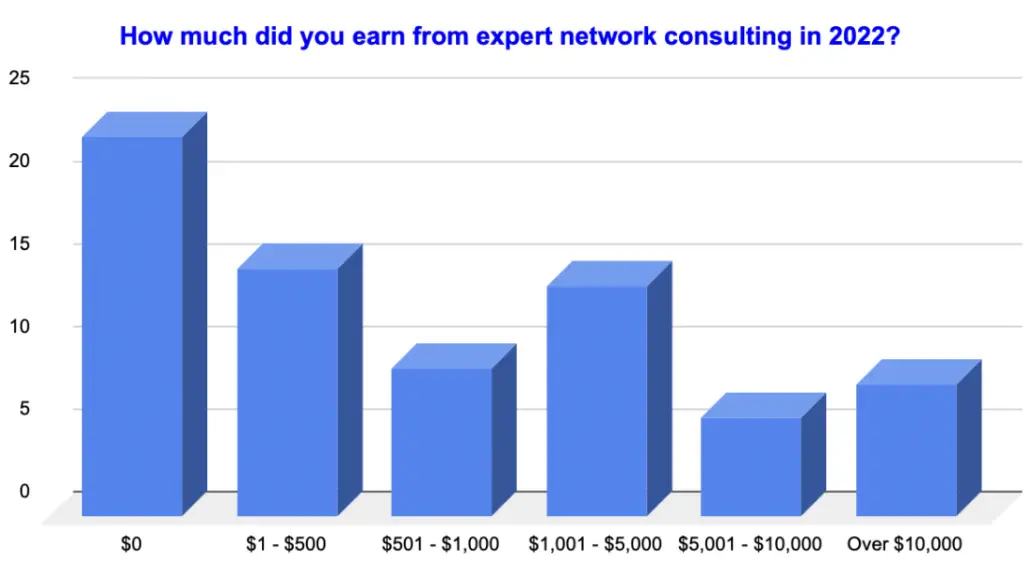
Outside of the money and the flexibility, one of the best features of expert network calls is that your work is done as soon as you hang up the phone!
There’s no deliverable, and no follow up. You don’t even need to send an invoice.
With most expert network firms, it takes a few clicks on their web portal to trigger payment, and some will even pay you automatically. You can generally choose between direct deposit or a check, and you will usually have payment in hand within two weeks and often sooner (which has bailed me out of an overdraft once or twice!). Remember that expert network income is taxable in the United States (you’ll receive a year-end form 1099), so make sure you account for that.
If you’ve made it all the way through this guide, or if you’ve scrolled to the conclusion to see if I know what I’m talking about (no judgement here, I’d do the same) I’ll leave you with this…
It’s easy to be on the fence about joining the world of expert network calls. Easy to think making money on your lunch break or wearing your pajamas is a pipe dream that’s not grounded in reality.
But the truth is – knowledge is a drug.
If you’ve got it, you better believe someone out there wants it. And when money is on the line – possibly millions of dollars resting on that knowledge – they’ll pay handsomely to get your knowledge out of your head, and into theirs.
It’s not a mysterious industry. It’s simple supply and demand. Now it’s up to you to take what you’ve learned in this guide, and make your expertise count. Take what you’ve learned here and register with some expert networks. You’ll rapidly start receiving project invitations and be on your way to building an interesting and lucrative side hustle in expert network consulting!
Time to get started! Register with the Big Five expert networks here:
>>> Click here to register as a GLG Council Member and start receiving project opportunities.

